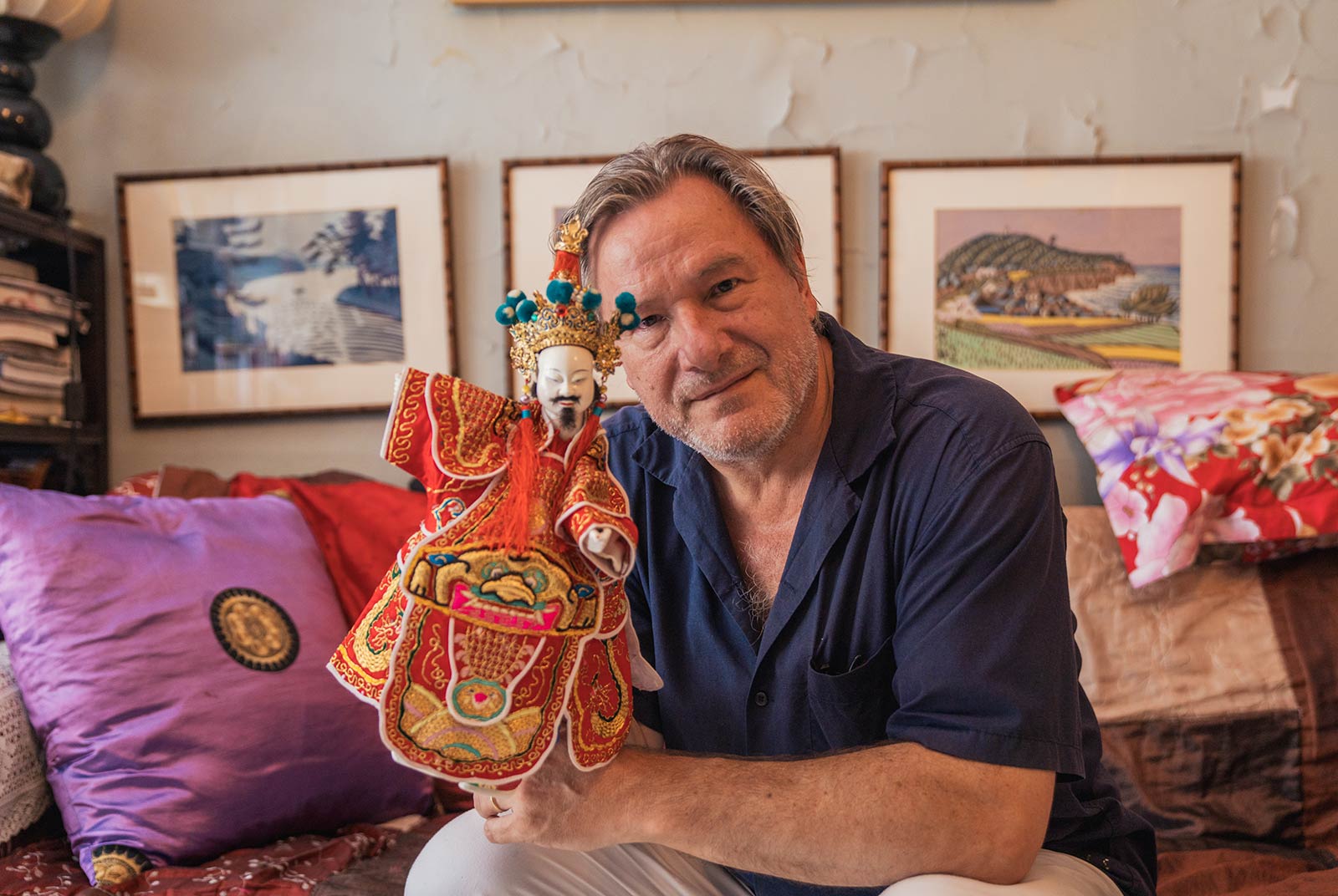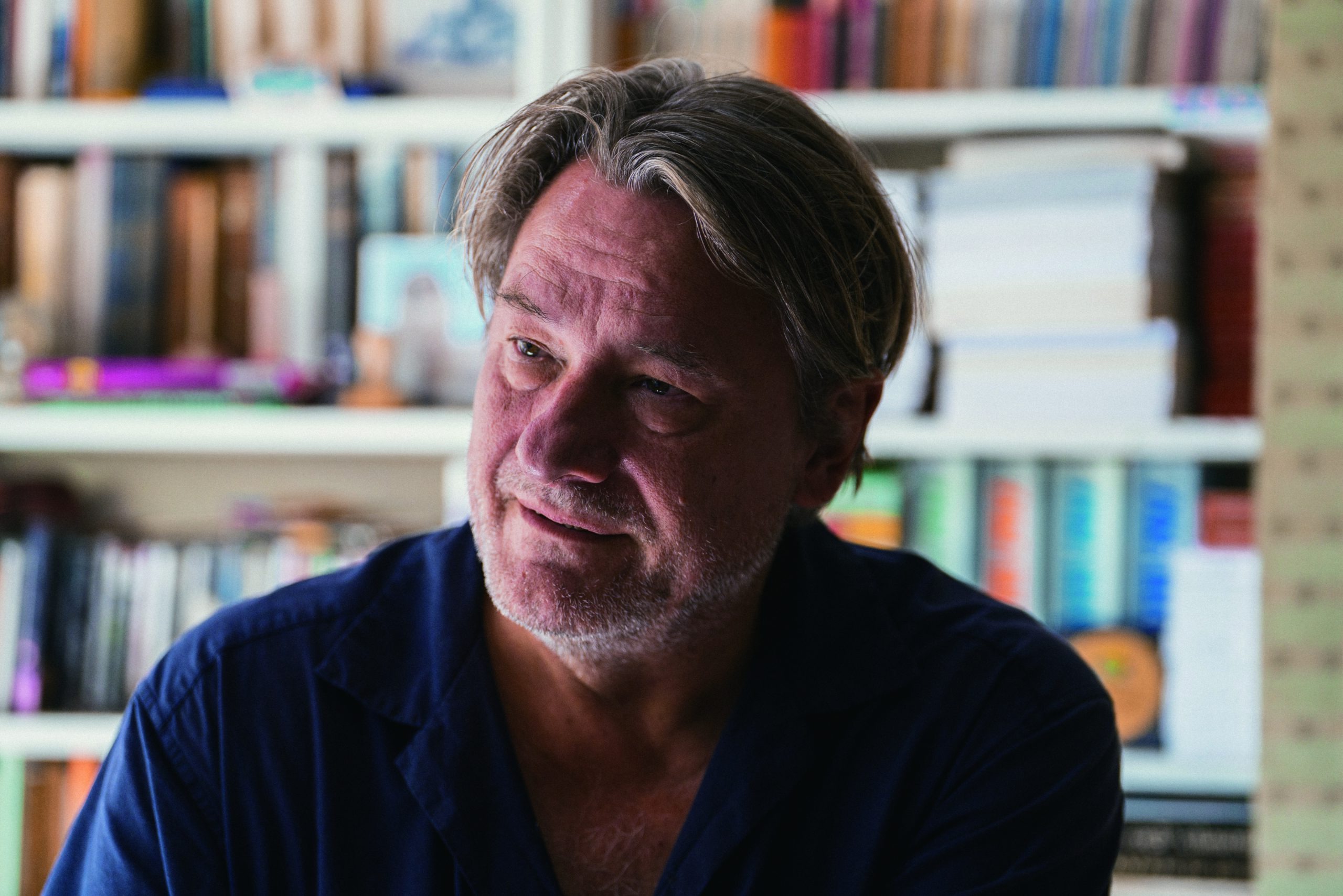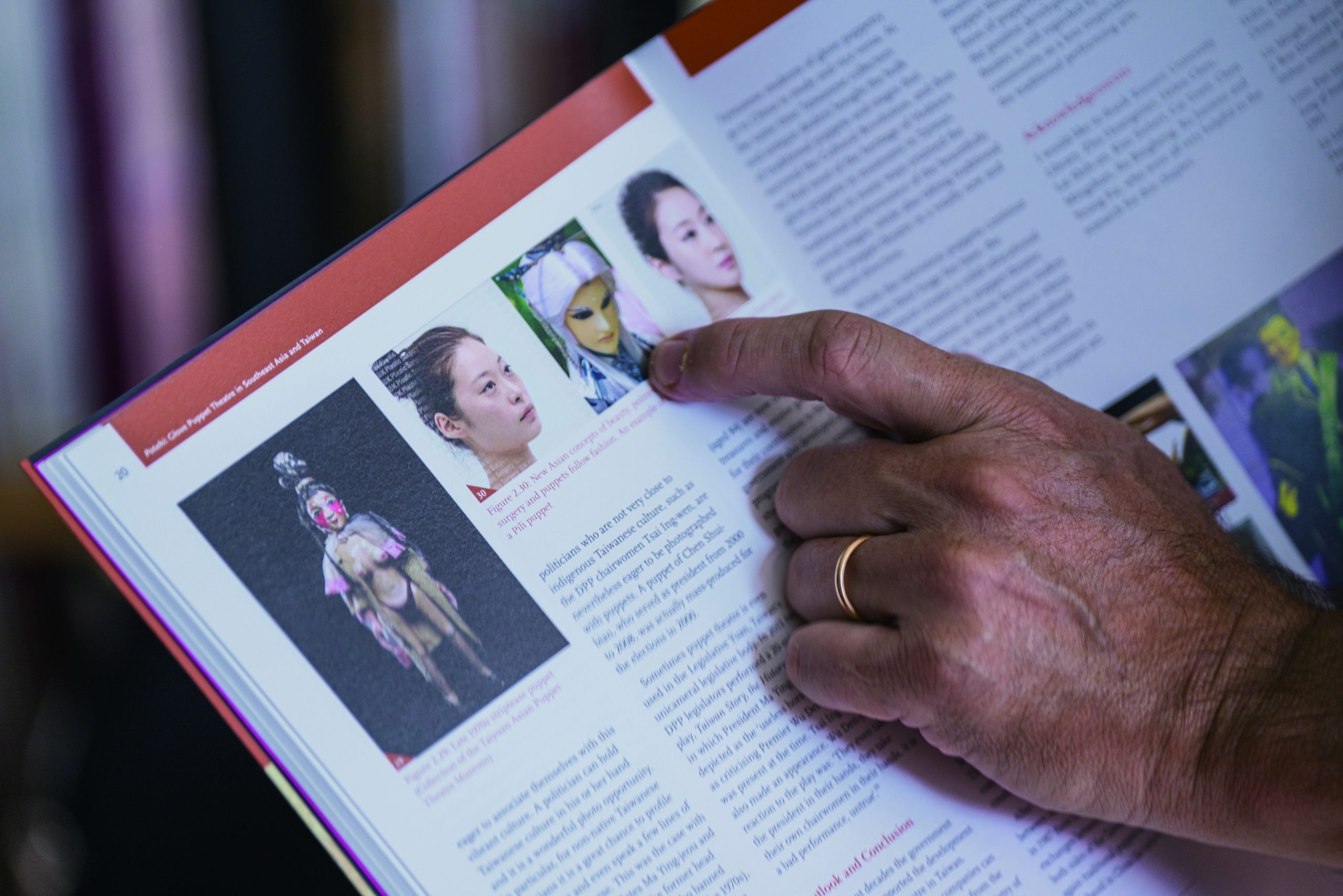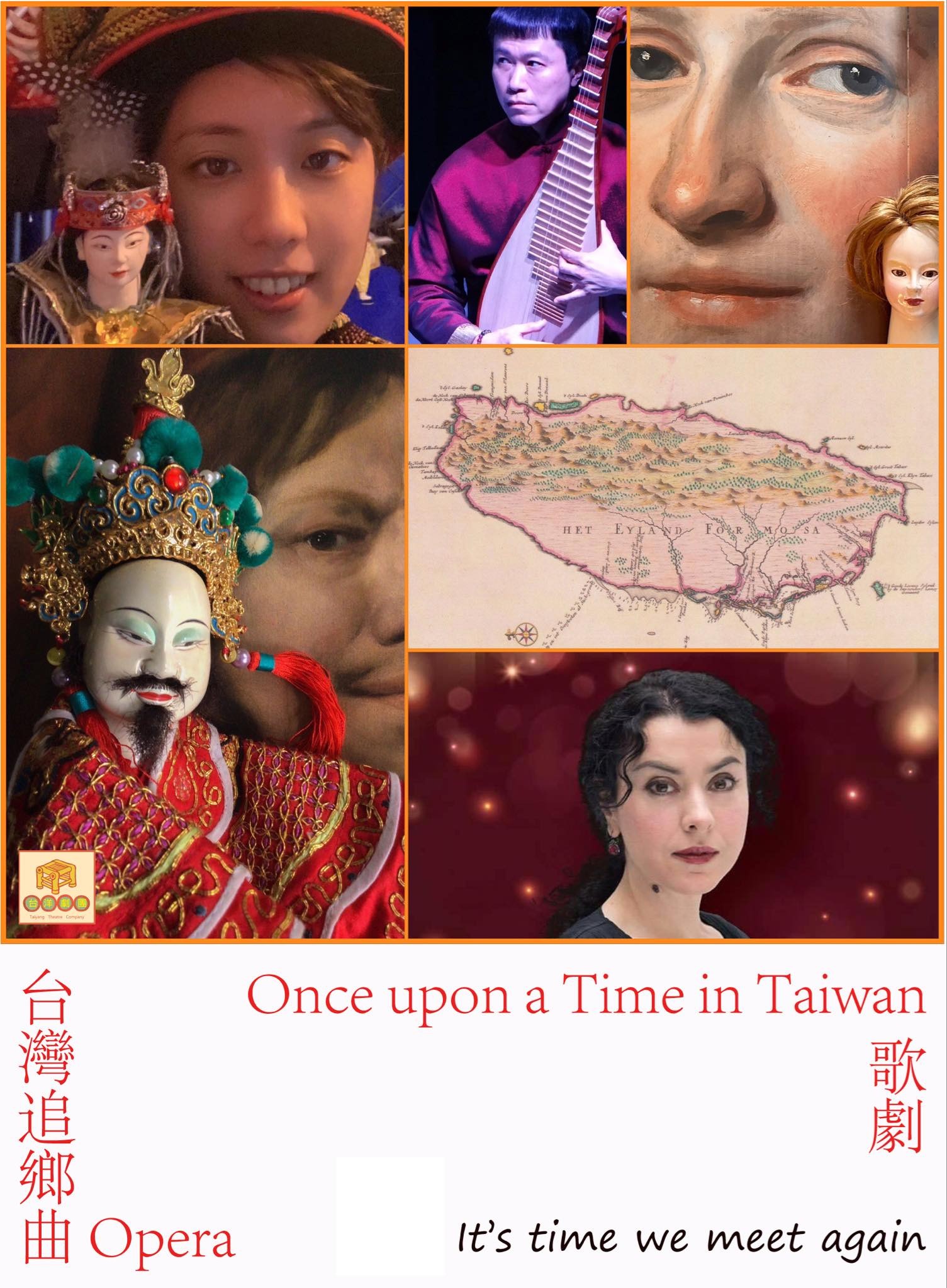Keeping Traditional Taiwanese Puppetry Art Alive with Robin Ruizendaal

Source:Samil Kao
In an era where traditional art forms are rapidly vanishing, Taiwanese glove puppetry stands as a vibrant testament to cultural resilience and evolution. At the forefront of this cultural preservation is Robin Ruizendaal, a Dutch scholar and puppetry enthusiast whose passion for Taiwanese puppetry extends beyond mere appreciation to active preservation and innovation.
Views
Keeping Traditional Taiwanese Puppetry Art Alive with Robin Ruizendaal
By Jenna Lynn Codyweb only
Taiwanese glove puppetry is not only a traditional art form, but also one of the few local performing arts to have modernized for contemporary audiences. Today, the traditional and the modern coexist: old-style puppet theater is staged for gods and humans alike, while puppet-based television dramas remain popular across generations. Taiwanese puppetry has also attracted global interest, including committed puppetry practitioners and preservationists.
Robin Ruizendaal is one such practitioner. Originally from the Netherlands, Robin holds a Ph.D. in Chinese Studies from Leiden University and has been living in Taiwan for 33 years. He was the director at the Taiyuan Asian Puppet Theatre Museum (台原亞洲偶戲博物館), and in collaboration with the Chairman of the Taiyuan Arts and Culture Foundation (台原藝術文化基金會), Dr. Lin Jingfu (林經甫), established the Taiyuan Puppet Theatre Company (台原偶戲團) in 1997. Following the closure of both the museum and the company in 2020, Dr. Lin generously contributed over ten thousand pieces related to puppet theater to the National Taiwan Museum (國立台灣博物館).
Robin’s remarkable efforts in promoting Taiwanese puppetry earned him the honor of becoming an honorary citizen of Taipei City and receiving the Taiwan-France Culture Award in 2019.
Currently, Robin is actively involved in projects in Taiwan, Japan, and Malaysia. He also lectures at National Dong Hwa University (國立東華大學) in Hualien, while continuing his research at Dr. Lin’s Collection within the National Taiwan Museum, where he is planning an upcoming exhibition.
Life in Taiwan
Before moving to Taiwan, Robin spent several years in China, primarily engaged in fieldwork focused on marionette theater in southern China and its relation to religion and social change in China since the 1920s.
 (Photo: Samil Kao)
(Photo: Samil Kao)
“In 1991, I came to Taipei and really enjoyed Taiwan as a contrast to China. As someone who studies Chinese society, it’s kept more of the original way of living, including its religion and social relationships. It was a real eye-opener for me, so I really liked it here,” Robin says.
Regarding the intersection of politics, culture and puppetry art, Robin notes, “What’s essential in Chinese culture is the religious life organized around ancestor worship, local temples. North of the Yangtze River, the Chinese Communist Party has eradicated this essential culture, which is sort of a moral compass of life, which has been sort of replaced by Communist ideology, which doesn’t really work, according to me.”
The Art and Culture of Taiwanese Puppertry
Puppetry is an “Art of the people,” according to Robin. With about 200 active companies, it’s the most common form of both modern and traditional theater in Taiwan.
 Robin introduces the puppet from Marco Polo. This play is a collaborative project between Robin and Taiwan’s national treasure puppeteer Chen Shih-Huang (陳錫煌). It features dialogues in Italian and Taiwanese Hokkien, combining traditional and innovative elements in a new classical theater performance.
Robin introduces the puppet from Marco Polo. This play is a collaborative project between Robin and Taiwan’s national treasure puppeteer Chen Shih-Huang (陳錫煌). It features dialogues in Italian and Taiwanese Hokkien, combining traditional and innovative elements in a new classical theater performance.
Traditionally speaking, its continued popularity is partially due to the fact that this art of the people is not just for the people: it’s for deities. Puppet theater can be found at temples across Taiwan as a gift to the gods rather than a human audience. In fact, sometimes there is no mortal audience at all.
Temple performances have specific elements including a religious prelude and a blessing of the community and the gods. Secular performances may follow similar storylines and include religious characters such as gods and buddhas, but “Lack the direct religious relationship with the community,” Robin says.
In fact, many archetypal characters — stock characters in puppetry performances who can be used in a variety of stories and scenes — are particularly pleasing to the gods, and they’re not always the ones you’d expect. For example, there’s the “striptease” character, who is usually given a real body instead of a typical cloth body.
“The gods are human in their tastes,” Robin explains.
Other stock characters popular in both religious and secular performances include the Comic Lead (笑生), whom Robin quips is “The rich kid of the family, always stupid, never getting the girl, being mean to everyone who’s lower class, obsequious to the higher class, an opportunistic little bastard, and very funny.”
There are also archetypal male and female characters, such as the successful graduate of imperial exams and his beautiful, patient, but long-suffering wife. Robin calls this “A sort of a class in Chinese culture, how to behave as a man and a woman, and represent the whole palate of traditional Chinese society, with lots of bawdy humor.”
Observing and Advocating for Puppetry in Taiwan
Taiwan is particularly important to the preservation of puppet culture. Robin notes, “What makes Taiwan unique in the world, since the 1960s, there have been television puppetry TV series and movies. Taiwan is the only place where you can go to a convenience store and buy a puppet show DVD.”
In Taiwan, puppetry had a very natural development. This melded with influences from Japanese and American films, resulting in, as he describes it, “A very postmodern form of performing arts.”
Robin continues, “In the 1950s and 1960s, you had this enormously creative era where almost anything goes on stage. People started using music such as Beethoven and the theme from Hawaii Five-O.”

The appearance of glove puppets in Taiwan has also undergone significant changes over the years. In the past, small carved heads were the norm, and smaller eyes were part of the beauty standard. Nowadays, modern puppets often look like K-pop stars with big eyes and narrow chins.
In the 1950s and 1960s, there were major developments in the history of Taiwanese-style puppetry because it opened up many artistic avenues. “The weirdest characters and puppets were — and are — being made,” Robin says.
Robin studied theater in the Netherlands but left when he was quite young. As such, his focus is on preserving puppetry art in his long-term home, Taiwan. He originally chose to study puppetry because, in his words, he “Wanted to study something really grassroots that nobody knew, related to music, sculpture, embroidery.”
 Robin is introducing the evolution of puppet facial features. With the rising influence of K-pop culture, puppet faces have also transformed to become more slender.
Robin is introducing the evolution of puppet facial features. With the rising influence of K-pop culture, puppet faces have also transformed to become more slender.
He said that being a foreigner in Taiwan means being “different,” but after living here for so many years, it has become his norm. He acknowledges that some people find this adjustment more difficult than others.
Over his three decades in Taiwan, Robin has staged performances in just about every well-known venue in the country, from Taipei Zhongshan Hall (台北市中山堂), the National Theater & Concert Hall (國家兩廳院), to The Red House (西門紅樓) in Ximending.
In addition to his other projects, he is currently developing a musical theater performance for Tainan City’s 400th anniversary celebration next year, which will be performed at Tainan’s Chihkan Tower (赤崁樓) as well as in Taipei.
Leveling Up: Aiming for a Global Audience
Outside Taiwan, Robin is involved in many projects aimed at introducing Taiwanese puppetry to international audiences. He is designing a small museum in Penang, Malaysia, while also developing a performance and workshop in Osaka, Japan that is devoted to nurturing students into curators of traditional performing arts.
As for performances with international appeal, Robin mentions Once Upon a Time in Formosa (台灣追鄉曲), a music theater production about Taiwan in the 17th century.
 Once upon a Time in Taiwan will be staged as part of the 400th anniversary celebration of Tainan City. (Source: Robin Ruizendaal)
Once upon a Time in Taiwan will be staged as part of the 400th anniversary celebration of Tainan City. (Source: Robin Ruizendaal)
That show is no longer in theaters. However, if you are interested in puppet theater, you may want to plan ahead for the Tainan 400th anniversary celebration show in April 2024.
Taiwanese puppetry still holds great potential to attract international audiences, despite the challenges it currently faces. In Asia, the entertainment value of traditional puppet theater is mostly on the decline. Robin observes that many kids who attend puppet shows may think, “I’ve seen a glove puppet show once, so I don’t need to see another.” It’s difficult to retain its entertainment function.
Therefore, while preservation efforts in Taiwan and across Asia are vital, global interest also matters, which has helped drive Robin’s focus.
This article is reproduced under the permission of TAIPEI. Original content can be found on the website of Taipei Travel Net.
Have you read?
- The unique tradition of the Eight Generals and the highlights of Taipei Qingshan King Festival
- Zhuilu Old Road in Taroko National Park – Not for the Faint of Heart
- Ximending: A Shopper's Heaven with a Dash of Tradition and Trendiness
Uploaded by Ian Huang






